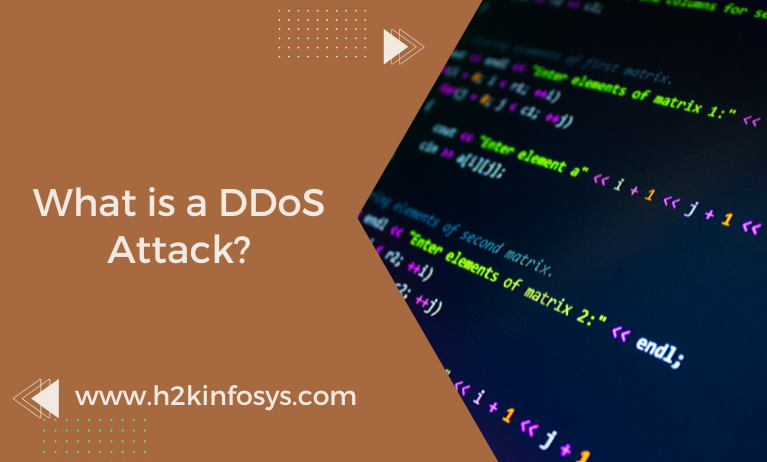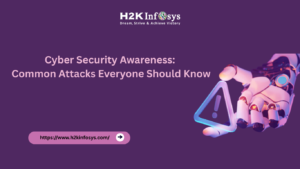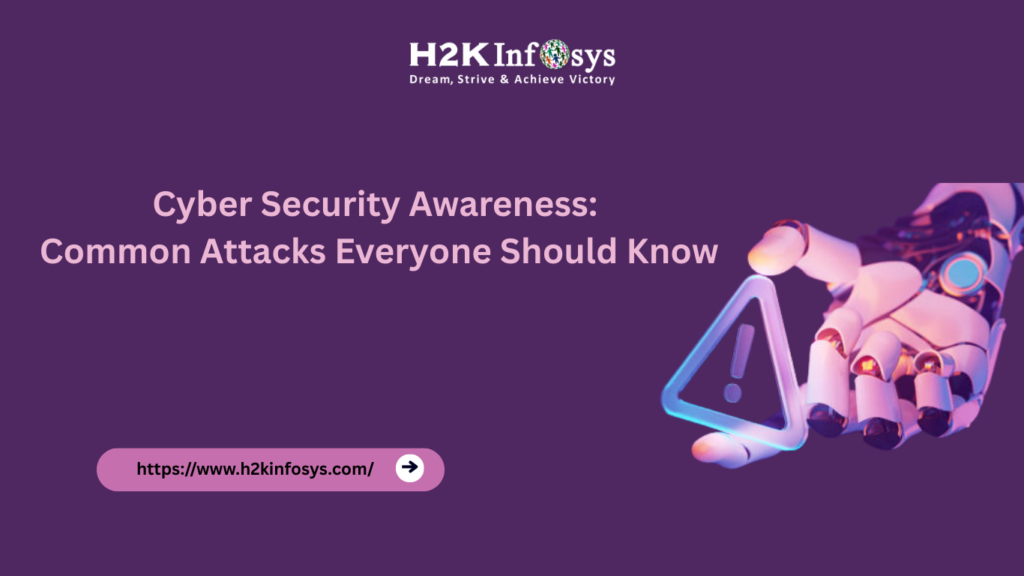Introduction
In today’s digital-first world, when a popular website suddenly goes offline or a network crashes for no obvious reason, chances are it’s not a random glitch. It’s often a result of DDoS Attacks, a rapidly growing threat that disrupts digital operations and causes significant financial and reputational damage.
For aspiring cybersecurity professionals enrolled in a Cyber security training and placement, understanding how DDoS Attacks work is non-negotiable. This blog unpacks the technicalities, types, real-world cases, and defenses related to DDoS Attacks. It also explains how enrolling in structured Cyber security training courses can prepare you to mitigate such attacks effectively.
What Are DDoS Attacks?
DDoS (Distributed Denial-of-Service) Attacks occur when multiple systems flood a targeted network or server with an overwhelming amount of traffic, rendering it inaccessible to legitimate users. The attack typically originates from a network of compromised systems commonly known as a botnet controlled by the attacker.
These DDoS Attacks aim to:
- Interrupt online services or networks
- Create downtime for businesses
- Serve as a smokescreen for larger security breaches
This makes DDoS Attacks one of the core components covered in comprehensive Cyber security training and placement programs.
How Do DDoS Attacks Work?
To understand how DDoS Attacks function, think of it as a digital traffic jam. The process includes:
- Infection of Devices: The attacker uses malware to compromise thousands (or millions) of devices globally.
- Botnet Creation: All infected devices form a botnet capable of executing attacks on command.
- Target Identification: A specific server, application, or network is selected as the target.
- Flooding: The botnet sends enormous traffic to the target, overwhelming it.
- Crash or Lag: The server can no longer process legitimate requests and crashes or slows down significantly.
This method is explored through hands-on labs in cyber security training courses, helping learners practice real-time detection and mitigation.

Types of DDoS Attacks You’ll Study in Cyber Security Training
Understanding the categories of DDoS Attacks helps professionals build tailored defenses. Cyber security learners are typically introduced to three major types:
1. Volume-Based DDoS Attacks
These attacks aim to saturate the bandwidth of the target using massive data packets.
- Example: UDP Flood
- Effect: Crashes websites or servers due to bandwidth exhaustion.
2. Protocol DDoS Attacks
These attacks exploit server resources by abusing protocols like TCP or ICMP.
- Example: SYN Flood
- Effect: Exhausts system memory, causing downtime.
3. Application Layer DDoS Attacks
These are stealthy and focus on crashing specific apps, such as web servers.
- Example: HTTP GET/POST Flood
- Effect: Disrupts functionalities without overwhelming bandwidth.
These distinctions are essential in any cyber security course and job placement program, where students must learn to detect, differentiate, and defend accordingly.
Real-World Examples of DDoS Attacks
GitHub – 2018
In 2018, GitHub faced one of the largest DDoS Attacks in history, peaking at 1.35 Tbps. The attackers used a Memcached reflection technique to amplify the impact.
Dyn – 2016
An IoT botnet named Mirai was used in one of the most infamous DDoS Attacks, taking down DNS provider Dyn. Major platforms like Twitter, Reddit, and Netflix were affected, emphasizing how deeply disruptive such attacks can be.
These examples are frequently discussed in cyber security training near me programs to showcase the consequences of unprepared infrastructures.
Why Are DDoS Attacks Dangerous?
DDoS Attacks are not just technical nuisances. Their implications stretch far beyond temporary service outages:
- Revenue Loss: Extended downtime leads to massive financial damage.
- Customer Distrust: Clients lose faith in unsecured platforms.
- Internal Damage: Often used to distract teams while a more severe breach occurs.
- Expensive Recovery: Mitigating a full-scale DDoS can cost millions.
For these reasons, top-tier cyber security training with job placement programs treats DDoS defense as a core learning outcome.
How to Prevent and Mitigate DDoS Attacks
Defense against DDoS Attacks requires multi-layered strategies:
1. Use of Intrusion Prevention Systems (IPS)
IPS detects and blocks suspicious traffic patterns. Students in cyber security training courses often configure Snort or Suricata for this purpose.
2. Implement Rate Limiting
This restricts the number of user requests to control the server load.
3. Geofencing and IP Blacklisting
Limiting traffic from high-risk geographies can reduce exposure to botnet activity.
4. Network Redundancy
Using globally distributed servers helps balance loads and absorb traffic spikes.
5. Cloud-Based Scrubbing Services
Though enterprise-level, such solutions are introduced theoretically in cyber security course with placement programs.
These techniques are complemented by lab exercises where students configure firewalls, test DDoS simulators, and monitor network logs.
Tools for DDoS Detection and Analysis
In a cyber security training and placement curriculum, learners engage with several tools for DDoS analysis:
| Tool | Functionality |
| Wireshark | Packet capture and protocol analysis |
| Snort | Real-time traffic monitoring |
| Suricata | IDS/IPS functionality |
| pfSense | Open-source firewall |
| Fail2Ban | Prevent brute-force attacks |
Through tool-based labs, students gain a deeper understanding of how DDoS Attacks can be monitored and countered in real-time.
DDoS Attacks and Career Advancement
Professionals trained to handle DDoS Attacks are in high demand across industries. These attacks are commonly faced by e-commerce sites, banks, healthcare systems, and cloud service providers.
Key Job Roles Requiring DDoS Defense Skills:
- Cybersecurity Analyst
- SOC (Security Operations Center) Analyst
- Penetration Tester
- Network Security Engineer
- Ethical Hacker
By enrolling in a cyber security course and job placement program, you build not only theoretical knowledge but practical DDoS mitigation skills aligned with job market needs.
Specializations in DDoS Protection
To go even deeper, learners can pursue niche specialties within cyber security training with job placement tracks:
- DDoS Threat Hunting and Forensics
- Advanced Network Traffic Monitoring
- Cloud DDoS Protection
- IoT Security and Botnet Prevention
These advanced modules allow students to align their learning with specific career goals in high-demand sectors.
Lab Activity: Simulating DDoS Attacks for Learning
Hands-on experience is the backbone of H2K Infosys’ cyber security training courses. Here’s an example lab setup to practice defending against DDoS Attacks:
Step-by-Step Guide:
- Set Up VMs: One as the attacker, one as the victim, and one as the IDS.
- Install Kali Linux: Use it as the attacker machine.
- Deploy Tools: Use Hping3 or LOIC to simulate traffic.
- Monitor Traffic: Use Wireshark to observe the packet flood.
- Write Firewall Rules: Block suspicious IPs and rate-limit requests.
- Analyze Logs: Document findings for reporting.
This hands-on knowledge is what makes Cyber security training near me programs valuable and effective.
The Future of DDoS Attacks
As AI and IoT adoption grow, so does the threat landscape. Future DDoS Attacks are expected to be:
- Faster: Using AI to identify weaknesses
- Smarter: Bypassing traditional defenses
- Wider-Spread: Leveraging billions of IoT devices
Staying ahead of these developments requires upskilling through verified cybersecurity training and placement programs that focus on both fundamentals and emerging threats.
Key Takeaways
- DDoS Attacks aim to overwhelm and shut down systems using multiple compromised devices.
- Types include volume-based, protocol, and application-layer attacks.
- Tools like Snort, Wireshark, and pfSense are critical in defense.
- Real-world cases, like GitHub and Dyn, show the enormous damage DDoS can cause.
- Career-focused Cyber security training with job placement helps learners build defense strategies and enter the workforce job-ready.
Conclusion
In a world increasingly vulnerable to cyber threats, understanding DDoS Attacks is more than a skill it’s a necessity. These attacks are relentless, scalable, and damaging, and organizations need professionals equipped to combat them.
Take the next step toward a secure future. Join H2K Infosys’ cyber security training and placement program today and gain the real-world skills you need to detect and defeat DDoS Attacks.


























